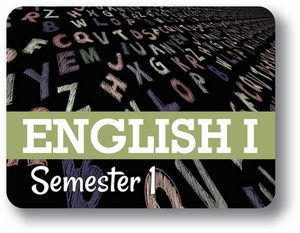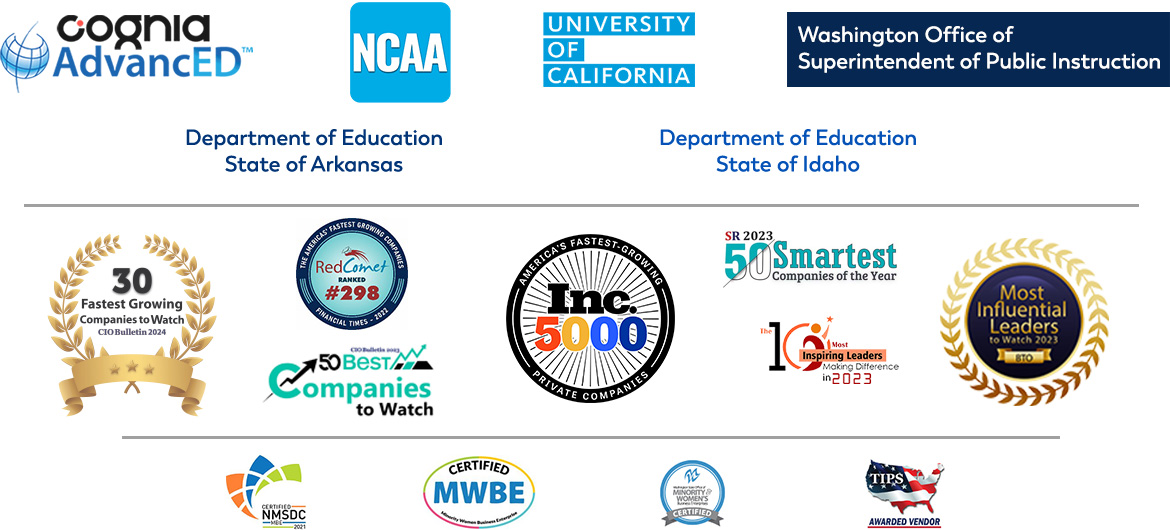Course Overview:
Through an array of literary and informational texts, students’ ability to comprehend and analyze various texts is strengthened. Selections for this course include poems, short stories, plays, novels, essays, well-known speeches, and a variety of informational texts such as significant documents from U.S. history. Authors include Ovid, Shakespeare, E.M. Forster, Edgar Allan Poe, Ambrose Bierce, Martin Luther King, Jr., and Abraham Lincoln.
The course guides students in the careful reading of assigned texts and fosters an appreciation for the cultural context in which the works were written. By learning to analyze the structure of various documents and texts, students gain an in-depth understanding of how text structure and organization impact meaning and shape the tone of a text, from context and word choice to connotative and figurative meaning.
Students also build on their grammar knowledge through a comprehensive study of the conventions of standard English grammar and usage when writing or speaking. A study of Greek and Latin root words, prefixes, and suffixes enhance students’ vocabulary and their ability to determine the meanings of new words.
Note: This course is not designed for ELL (English Language Learners) students. ELL students may enroll in this course ONLY if they have adequate mentor support at their home school and are able to fulfill all course requirements.
Prerequisites:
Middle School Language Arts
Syllabus:
Section 1: Conventions of the English Language
In this unit, you will learn about the following objectives:
- Basic English Language Conventions
- Introduction to Grammar
- Using Phrases & Clauses Correctly
- Using Verb Forms Correctly
- Modal Auxiliaries & Interrogatives
Lessons:
- Basic Conventions: Capitalization
- Basic Conventions: Punctuation
- Basic Conventions: More Punctuation
- Basic Conventions: Spelling
- Phrases and Clauses
- Topics Related to Phrases and Clauses
- Verbs
- More Rules on Grammar
Section 2: Text and Its Characteristics
In this unit, you will learn about the following objectives:
- Interpreting Words and Their Meanings
- Distinguishing Word Nuances
- Analyzing the Structure of a Literary Text
- Analyzing How an Author Develops Ideas in an Informational Text
- Using Visual Text Features to Structure an Informational Text
Lessons:
- Words and Their Meanings
- Word Choices
- Word Roots
- Word Nuances
- Case Study 1- “The Raven” by Edgar Allan Poe
- Context and Meaning
- Case Study 2- “The Raven” by Edgar Allan Poe
- Structure of Text
- Case Study - "Life on the Mississippi" by Mark Twain
- Analyzing Informational Text
- Informational Text Structure
- Introductory Passage, Thesis Statement and Concluding Statements
Section 3: Theme and Its Development
In this unit, you will learn about the following objectives:
- Determine the Central Idea or Theme of a Literary Text
- Understand how Theme Develops over the Course of a Text
- Summarize Key Points Related to Theme
- Use Literary Elements and Other Methods to Determine Theme
- Write an Objective Summary of a Literary Work
Lessons:
- Introduction to Theme
- “The Lady or the Tiger?” by Frank R. Stockton - Part 1
- “The Lady or the Tiger?” by Frank R. Stockton - Part 2
- “An Occurrence at Owl Creek Bridge” by Ambrose Bierce - Part 1
- “An Occurrence at Owl Creek Bridge” by Ambrose Bierce - Part 2
- “An Occurrence at Owl Creek Bridge” by Ambrose Bierce - Part 3
- Analysis of“An Occurrence at Owl Creek Bridge” by Ambrose Bierce
- "Fire and Ice" by Robert Frost
- “Trifles” by Susan Glaspell - Part 1
- “Trifles” by Susan Glaspell - Part 2
- “Trifles” by Susan Glaspell - Part 3
- “Trifles” by Susan Glaspell - Part 4
- Analysis of “Trifles” by Susan Glaspell
- Development of Theme
Section 4: Comparing Text and Identifying Source Material
In this unit, you will learn about the following objectives:
- Understand How to Analyze Similar Themes
- Recognize How Different Authors Approach a Similar Topic
- Analyze How an Author Draws On and Transforms Source Material in a Specific Work
- How to Compare Two Texts
Lessons:
- Science Fiction "2BR02B" by Kurt Vonnegut, Jr. - Part 1
- Science Fiction "2BR02B" by Kurt Vonnegut, Jr. - Part 2
- Science Fiction “In the Year 2889” by Jules Verne and Michel Verne - Part 1
- Science Fiction “In the Year 2889” by Jules Verne and Michel Verne - Part 2
- Science Fiction “In the Year 2889” by Jules Verne and Michel Verne - Part 3
- Compare and Contrast
- Comparing Literature
- Ancient Literature
Section 5: Characters, Point-of-View / Perspective, Inferencing
In this unit, you will learn about the following objectives:
- Explore Complex Character Development over the Course of a Text
- Understand Point of View and Perspective and How they Differ
- Distinguish between Explicit and Implicit Information in a Text
- Draw from Implicit Information in a Text to Make Inferences
- Cite Textual Evidence to Support Inferences Made about a Text
Lessons:
- Introduction to Characters
- Character Case Study
- Perspective & Point-of-View
- Great Expectations
- "Hamlet" by William Shakespeare
- "Gulliver’s Travels" by Jonathan Swift
- "Where Angels Fear to Tread" by E.M. Forster - Part 1
- "Where Angels Fear to Tread" by E.M. Forster - Part 2
- Inferencing
- "The Hound of the Baskervilles" by Arthur Conan Doyle
- "Pride and Prejudice" by Jane Austen
- "Ozymandias" by Shelley
- Aesop’s Fable
- Closing Remarks

